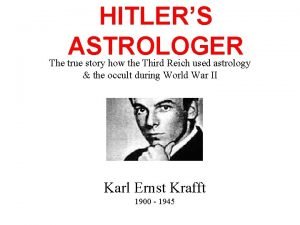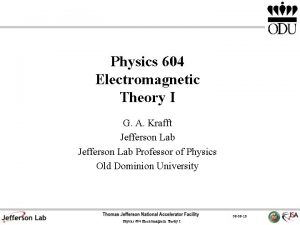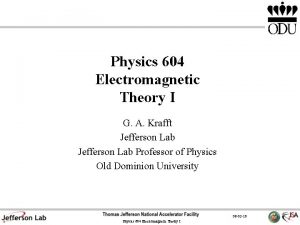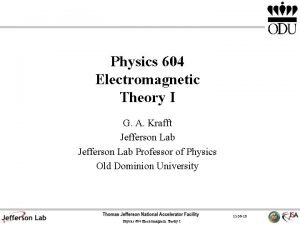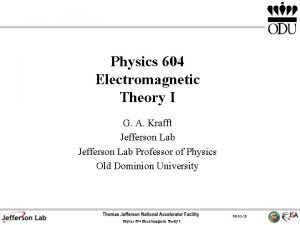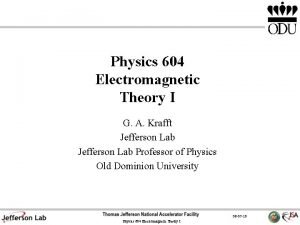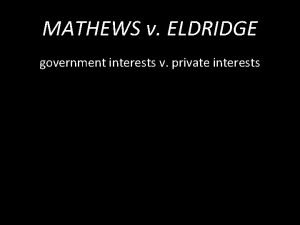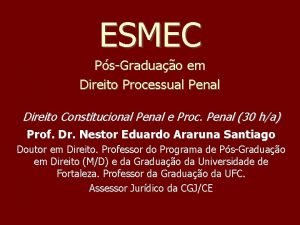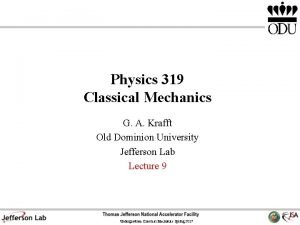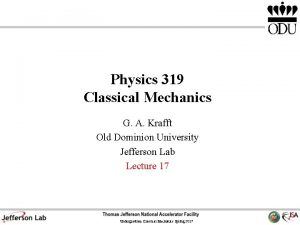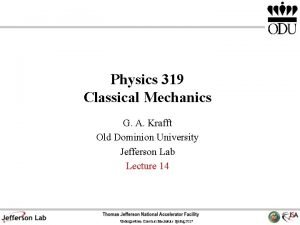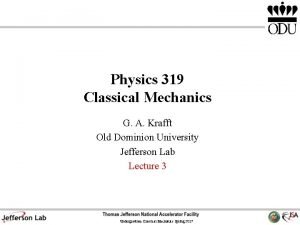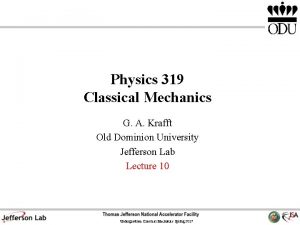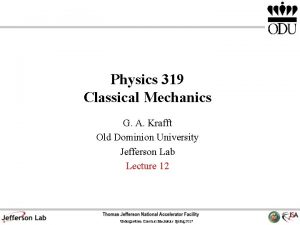Physics 319 Classical Mechanics G A Krafft Old









- Slides: 9

Physics 319 Classical Mechanics G. A. Krafft Old Dominion University Jefferson Lab Lecture 1 Undergraduate Classical Mechanics Spring 2017

Mechanical Motion • General classes of motion – Translation: movement from one location to another. Example: driving a car – Rotation: “circular” motion of a body around a fixed axis of rotation. Examples: earth’s rotation about the axis through the north and south poles, motion of a spinning top – Oscillation: repetitive motion displayed by some objects. Examples: pendula or driven electrical circuits – Revolution: orbital motion about centers of attraction. Examples: Lunar motion about the earth, planetary motion about the sun, solar system motion about the galaxy, …. . Undergraduate Classical Mechanics Spring 2017

Classical or Analytical Mechanics • Set of general methods, fundamentally based on Newton’s laws and mechanics, for finding and solving the differential equations for the motion of bodies. • Requirements for a classical description to be valid: – Velocities much less than the speed of light (nonrelativistic), otherwise need relativistic mechanics – Bodies described are macroscopic and large (nonquantum), at atomic and nuclear scales need quantum mechanics – Gravitation fields are weak and constant (Newtonian) and accelerations non-relativistic, more generally will need Einstein’s General Relativity for an adequate description (no black holes in this course!) Undergraduate Classical Mechanics Spring 2017

Formulations of Mechanics • Newtonian – Developed in Principia to synthesize and explain countless observations about celestial bodies. Used to “prove” the law of universal gravitation. Solved the two body gravitational problem in detail, as we shall. • Lagrangian – Method more general than Newton’s method as it yields equations of motion in a general form that can apply in, for example, accelerating frames of reference. We will use this formalism a lot. • Hamiltonian – Most advanced formulation mathematically. A chapter in Taylor we won’t get to. You will in graduate school. Important formulating quantum mechanics. • See Radyushkin for some history Undergraduate Classical Mechanics Spring 2017

Fundamental Quantities • Positions in space – Measured by lengths (projections on coordinate axes) – Space is a three dimensional Euclidean (vector) space – Continuous “manifold” • Time – Measured by some repeating phenomenon (stopwatch, quartz crystal, atomic clock, …. – In CM does not change for a moving observer – Continuum • Mass – Resistance to acceleration – Fundamentally discreet; if N>>1 approximately continuous Undergraduate Classical Mechanics Spring 2017

Vectors in 3 D Undergraduate Classical Mechanics Spring 2017

Vector Properties • Vector addition by parallelogram rule • Scalar Multiplication • Length or norm Undergraduate Classical Mechanics Spring 2017

Scalar Vector or Dot Product • Takes two vectors as inputs and yields a number (scalar) • • Linear in both inputs and symmetrical For normal (perpendicular) vectors vanishes Maximum when vectors parallel (co-linear) Get the vector norm by Undergraduate Classical Mechanics Spring 2017

Vector Cross Product • Takes two vectors as inputs and yields a normal vector • • Linear in both inputs and anti-symmetrical For co-linear vectors vanishes Maximum when vectors perpendicular Norm of the vector product is the area of parallelogram spanned by the input vectors • Important when rotations involved Undergraduate Classical Mechanics Spring 2017

